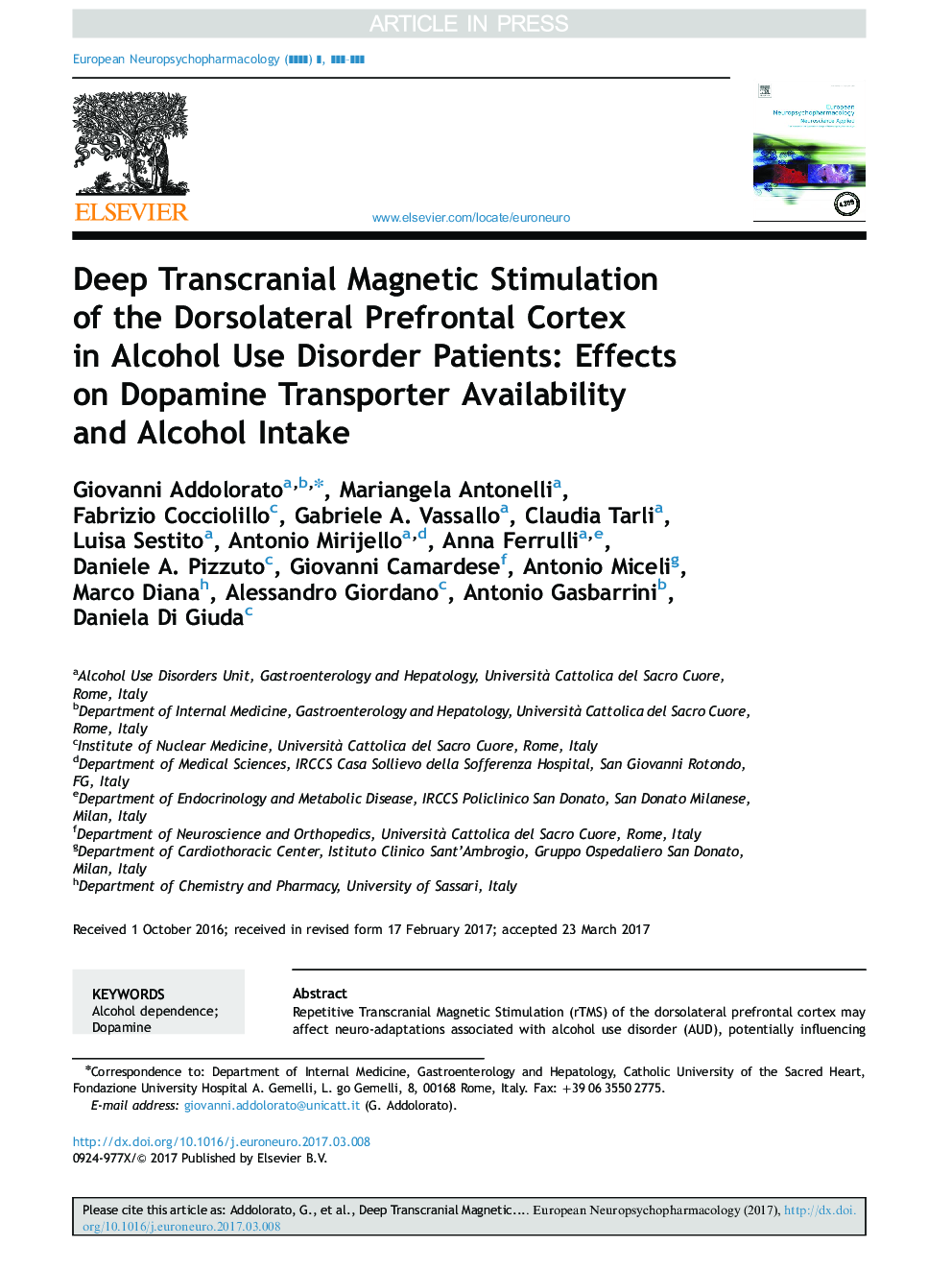| Article ID | Journal | Published Year | Pages | File Type |
|---|---|---|---|---|
| 4930506 | European Neuropsychopharmacology | 2017 | 12 Pages |
Abstract
Repetitive Transcranial Magnetic Stimulation (rTMS) of the dorsolateral prefrontal cortex may affect neuro-adaptations associated with alcohol use disorder (AUD), potentially influencing craving and alcohol intake. We investigated alcohol intake and dopamine transporter (DAT) availability by Single Photon Emission Computed Tomography (SPECT) in the striatum of AUD patients before and after deep rTMS. Fourteen patients underwent baseline clinical and SPECT assessment. Eleven out of fourteen patients were randomized into two groups for the REAL (n.5) or SHAM (n.6) treatment. Clinical and SPECT evaluations were then carried out after four weeks of rTMS sessions (T1). At baseline, AUD patients showed higher striatal DAT availability than healthy control subjects (HC). Patients receiving the REAL stimulation revealed a reduction in DAT availability at T1, whereas the SHAM-treated group did not. In addition, patients receiving the REAL stimulation had a decrease in alcohol intake. The results of this longitudinal pilot study may suggest a modulatory effect of deep rTMS on dopaminergic terminals and a potential clinical efficacy in reducing alcohol intake in AUD patients. Further investigations are required to confirm these preliminary data.
Keywords
Related Topics
Life Sciences
Neuroscience
Biological Psychiatry
Authors
Giovanni Addolorato, Mariangela Antonelli, Fabrizio Cocciolillo, Gabriele A. Vassallo, Claudia Tarli, Luisa Sestito, Antonio Mirijello, Anna Ferrulli, Daniele A. Pizzuto, Giovanni Camardese, Antonio Miceli, Marco Diana, Alessandro Giordano,
